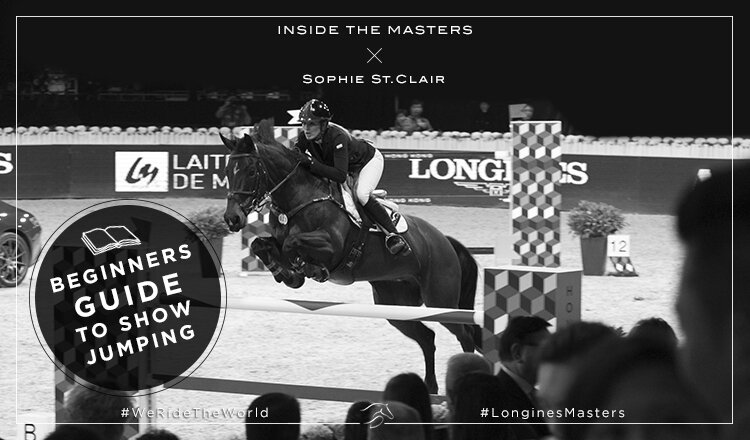26th August 2016 Los Angeles
Sophie St.Clair back with your "Inside The Masters" look at the rules of show jumping. You’re new to the sport? Don't worry, Longines Masters has you covered. We know you really like seeing the horses jump around but what does it all mean? Read on for your beginner’s guide to the rules of show jumping. We'll even teach you how to score as you watch.
Before each class, the horse show management will determine the order that each of the horse and rider combinations will enter the arena to compete. This is called an "ORDER OF GO". The order is often passed out to spectators before the event and is a great place to keep score as you watch.
--> Next to the riders names create two columns running the length of the list. At the top of the first column write "Faults" and at the top of the other write "Time". Too lazy ? You can also follow-up on the startlist and results clicking here.
A "CLASS" is what we call a competition. Before the class the rider studies the "COURSE DESIGN". This tells him what order he is to jump the fences and how much time he has to do it. Yes! They have to memorize every new course they jump. Why is it important to know where to go? If a rider goes off course he can be eliminated from the class.
After looking at the course design, the rider will "WALK THE COURSE" counting the number of horse strides between each of the fences or obstacles. Sometimes, course designers can be tricky and set jumps closer together or further apart than what may be obvious on the course design. This means the rider needs to know his horse well to adapt the number of strides between the fences and be sure to clear each of them. Clearing the fence is what we want to see. No dropped rails. Dropped rails and a refusal are called "JUMP FAULTS". This means 4 penalty points added to the score for each lowered obstacle or for each refusal. This is the basics to know about "TABLE A", the most-used format in show jumping. Note that if a horse refuses twice to go over a fence during the class the combination he will be eliminated!
--> Write the final number of faults in the "Faults" column after each round.
Another example of tricky course designers is the "TIME ALLOWED" to get around the course. This unique feature can be like an additional obstacle for the horse and rider. Not only do they have to go around in the right order and keep the rails up but they have to do it in the time allowed. A 1 second penalty is added for each partial second over the time allowed.
--> Don't forget to count these too. Add them together with the jump faults for the score.
Most of the classes at the Longines Masters are "TABLE A WITH JUMP-OFF" : all riders who go clear and inside the time in the first round will jump a shorter course which is called a "JUMP OFF". The combinations that have the fastest time with the fewest jump faults or time faults in the jump off will determine the winner and each subsequent placing. In "TABLE A AGAINST THE CLOCK", there is no second round. Final placing is determined with time and faults : the winner is the fastest time with the fewest penalties.
So, we know the winner and where the other riders placed, Now what? It’s time for the "PRIZE-GIVING CEREMONY". Be sure to stay in the grandstands to cheer for the 6 top placed riders as they will be awarded with beautiful Longines Masters ribbons and prizes – in addition to Prize-Money. Don’t miss their "VICTORY GALLOP", the most exhilarating part for the winner and any true sportsman. The winner will lead the other placed riders around the arena as they parade to the cheers of adoring fans. Be ready! Sometimes gallant riders will toss their ribbons to the crowds as a souvenir of the event.
As you watch just keep thinking about the basic rule of show jumping which is "clean and clear" or "FASTEST TIME x FEWEST FAULTS". At Longines Masters of Los Angeles, you'll sound like a show jumping aficionado and wow your friends when you keep score like a pro! But be careful ! The Longines Speed Challenge is the only class with different rules as it has been created by EEM to be the fastest class in the world. Check it out here for more details --> Longines Speed Challenge.
For more information follow the link to our web site where you will find the Basic Rules of Show Jumping Glossary, and be sure to stop by the educational area in the Prestige Village during the event!





